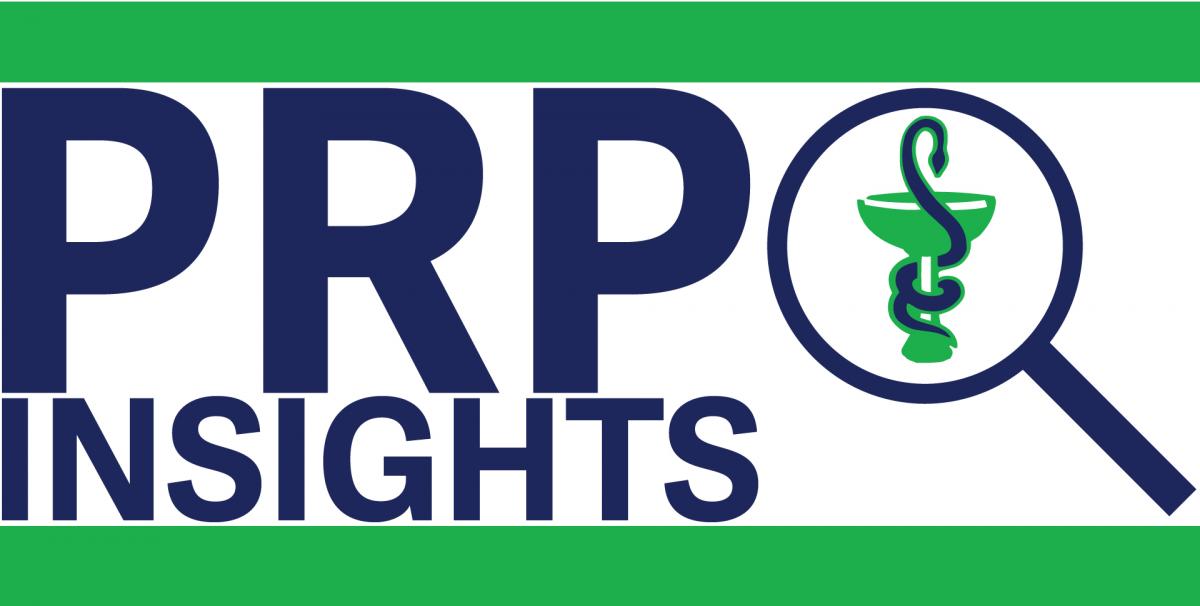
PRP Insights – Prescription Documentation
Proper prescription documentation provides clear accountability for filling a prescription from start to finish. The HPA Bylaws Schedule F Part 1 - Community Pharmacy Standards of Practice require prescriptions to be documented with the written confirmation of the registrant(s) who were involved in and responsible for filling a prescription.
Prescription Documentation Requirements Summarized
| pRESCRIPTION DOCUMENTATION REQUIREMENTS SUMMARY TABLE | ||
|---|---|---|
| Who can sign off on these activities? | ||
| Steps that a registrant must sign off for | Pharmacist | Pharmacy Technician |
|
Verify Patient Identification
|
Yes | Yes |
|
Verify Patient Allergy Information
|
Yes | Yes |
|
Prepare Prescription Product
*sign off only required if prescription product preparation was performed by a registrant |
Yes | Yes |
|
Review PharmaNet
|
Yes | No |
|
Identify & Resolve Drug Therapy Problems, If Any
*sign off only required if a drug therapy problem was identified and addressed |
Yes | No |
|
Perform Final Check
|
Yes | Yes |
|
Perform Patient Counselling or Accept a Refusal for Counselling
|
Yes | No |
During practice reviews, Compliance Officers will review prescriptions to ensure the documentation is clear in identifying the registrants responsible for each of the steps outlined in the summary table above. There are many ways to meet the documentation requirements including, but not limited to, utilizing electronic workflow details, pharmacy stamps, written pharmacy policies, etc. The College is not prescriptive with regards to which process a pharmacy uses to document prescriptions, as long as the documentation is clear and accurately reflects registrant accountability.
Common Areas of Non-Compliance
Documentation is not clear
A common reason for non-compliance is a lack of clarity in the documentation. It is important that registrants are aware of what they are taking accountability for when they sign or initial for prescription documentation. In some cases, the intent behind an initial may be explicitly stated. For example, some pharmacies may utilize stamps with the individual steps laid out for the registrant to sign next to. However, in cases where the documentation may not be as clear or explicit, then the pharmacy would be expected to have written policies in place that clearly define where registrants are to sign for the required tasks. Having these policies in place is important to ensure that all registrants understand how to document prescriptions to indicate their accountability. For illustrative purposes, an example of clear and unclear documentation is provided below:

Documentation does not accurately reflect which registrant has performed the step
Registrants must ensure that they understand what actions must be performed under each step, as summarized in the Prescription Documentation Requirements Summary Table above. Some common misunderstandings revolve around the steps of verifying patient identification and verifying patient allergy information.
In some instances, Compliance Officers have noted that registrants have misinterpreted the patient identification requirement to mean checking that the name on the prescription matches the name on the prescription label. To clarify, verifying patient identification involves positively identifying the patient to ensure the correct person is getting the prescription. This is different from the action of checking that the name on the prescription and prescription label matches, which is instead a component of a final check. More information about the requirements for verifying patient identification can be found in the College’s practice support tool on Patient Identification Verification.
Verifying patient allergy information involves verifying the allergy status with the patient or patient representative each time a prescription is filled for both new and refill transactions. In some cases, Compliance Officers have noted that pharmacists have signed off on verification of patient allergy information after reviewing the existing allergy information in the patient’s local and/or PharmaNet profile, without verifying with the patient or patient representative. The documentation must accurately reflect which registrant has performed the step of verifying patient allergy information with the patient or patient representative at the time of filling a prescription.
Documentation of certain steps is missing
Another common area of non-compliance is when documentation for certain steps is missing. This could include scenarios in which prescriptions are documented with check marks instead of initials, counselling refusals are not documented by a pharmacist or refills are not documented to the same extent as new prescriptions.
DOES MY DOCUMENTATION MEET THE REQUIREMENTS?Pharmacy registrants are encouraged to do self-audits of their documentation by asking themselves the following questions:
|
Documentation: Frequently Asked Questions
Can certain steps be documented together, or do I have to sign individually for every step?
If the pharmacy workflow supports having more than one step documented together then this would be acceptable. For example, if the PharmaNet and final check are always performed together by the same pharmacist, then there could be one designated spot for the pharmacist to initial to indicate they have performed both steps, as long as this is clear.
Does documentation always have to be on the prescription or prescription hardcopy?
No. The documentation does not necessarily need to be on the prescription or prescription hardcopy. The documentation can exist in different locations (i.e. documented electronically) but it must be traceable to the specific prescription in case it is needed to be retrieved and referenced.
Can prescriptions be documented electronically?
Yes. As long as the signatures are applied in a manner that is secure and only reproducible by the intended user.
- Practice Review Program, PRP Insights
 Share
Share


